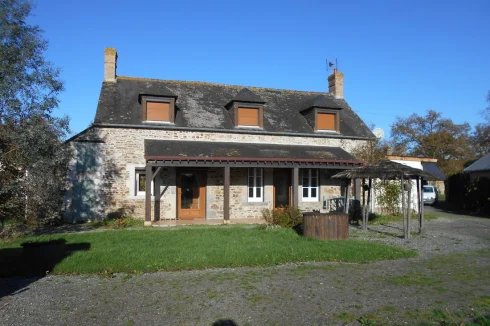Buyers Victim of 'Carjack' Attic Conversion
Wednesday 04 January 2012
A couple discovered that the roof of the property they had purchased was supported on car jacks.
The problem came to light when they decided to carry out renovation works on a property they had purchased several months previously from the rather appropriately named Monsieur Leibig.
Monsieur Leibig had previously created additional living space in his 1980s property through a conversion of his attic.
Although no expert in property renovation, he was clearly able to bring other skills to the project, for having removed or altered several purlins and collars, he proceeded to support the roof rafters on a series of car jacks.
Using this innovative approach, the car jacks were soldered to wire mesh he had wrapped around the rafters and other elements of the roof structure.
With the headroom now available in the attic, he then arranged for two sky lights to be professionally installed in the roof and the habitable area to be boarded out.
Nevertheless, Monsieur Leibig clearly had some misgivings about his handywork, for when he later decided to sell the property he omitted to tell the purchasers about the approach he had taken to the conversion.
Not surprisingly, when during the progress of renovation works the new owners discovered the building techniques used by Monsieur Leibig they were less than impressed, and decided to bring an action for vice caché (hidden/latent defects) in the courts.
Regular readers will be aware of the protection offered to buyers by the vice caché rule, which states that a purchaser is obliged to disclose all important aspects about the property to the seller.
As is frequently the case the seller included a clause in the sale contract giving no guarantee against latent defects. Strictly speaking, this gave the buyer no recourse against the seller.
Nevertheless, such has become the pro-forma use of this waiver that courts no longer take it for granted and do examine whether the seller acted in good faith.
In this case, the Cour de Cassation decided that, not only was the seller aware of the carjacked roof, but that the singularly unusual nature of the changes carried out required that he bring them to the attention of the buyer.
In short, that the seller was guilty of bad-faith in not revealing the nature of the conversion works, and could not rely on the exoneration clause in the sale contract.
Damages
The only question left for the court to decide was to what extent the configuration led to a lack of stability in the roof structure and just what works were required to rectify it.
On this point there was a great deal of conflicting expert evidence, for, despite the unusual nature of the changes, it was by no means evident that there was a structural problem with the roof.
This was perhaps because Monsieur Leibig had taken the precaution of installing no less than 20 car jacks to support the remaining roof timbers.
In the end the court decided that the plaintiffs should be awarded damages of only €2,500, given primarily to reinforce the lateral stability of the roof structure.
This was a sum far less than the €85,000 it was estimated that would be required for a complete roof replacement to be carried out.
Thank you for showing an interest in our News section.
Our News section is no longer being published although our catalogue of articles remains in place.
If you found our News useful, please have a look at France Insider, our subscription based News service with in-depth analysis, or our authoritative Guides to France.
If you require advice and assistance with the purchase of French property and moving to France, then take a look at the France Insider Property Clinic.





